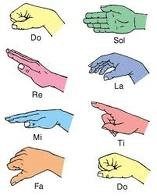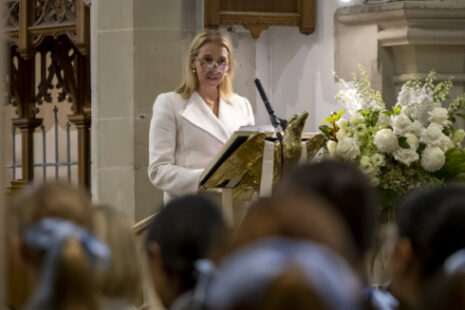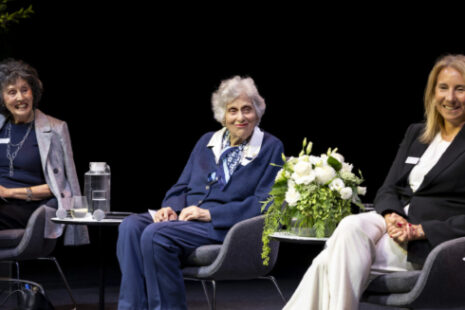AN-TE-LOPES ARE AWE-SOME
Expanding literacy and numeracy skills through music
“Children who undertake formal, ongoing musical education have significantly higher levels of cognitive capacity, specifically in their language acquisition and numerical problem solving skills.”
Numeracy and Literacy are not areas you would commonly associate with learning to play the violin. However, without numbers and words in music, knowledge, rhythms and counting would not exist.
This connection is prevalent through each child’s ability to comprehend simple instructions that are integral in the learning of an instrument, particularly the violin. I urge you to ponder the following examples. What does the violin teacher mean when you are asked to place your bow at the frog, or play (mf) mezzo forte? Why are we counting the number of syllables in words? Or, my bow needs to be divided into how many sections?
Unconsciously, our Year 2 Strings students are exercising and expanding their literacy and numeracy skills each time they pick up the violin. In the Year 2 Strings program, understanding short, precise instructions is necessary for progress, not to mention, the safety of the instrument.
Right from the first lesson, we introduce students to the different parts of the violin and bow such as horsehair, frog, nut, scroll, f-holes, bridge and pegs. Learning these words is not difficult because most of them already exist as part of the students formed vocabulary, however, some of the meanings are quite different. Did you say frog?
Additional to their understanding of simple instructions in the ‘mother tongue’, students are also required to learn Italian in the form of words describing musical expression or articulation. Forte (loud) and piano (soft) are introduced in the most basic pieces of music and become recognised in the abbreviated form of f and p. Other words like staccato (short) or legato (smooth) indicate the articulation of the notes. This is already a great deal of information to retain, however, it is just the beginning.
In the Junior School, students learn to differentiate tonal pitches through fixed syllables and hand signs using a musical education method called Solfege. The syllables, do, re, mi, fa, so, la ti do synonymous with the program, are well recognised from the hit production of The Sound of Music.
 The hand signs are an excellent visual teaching aid which allows students to actually see the height or depth of the pitch. For string players, this is a fundamental part of their auditory development for securing accurate intonation.
The hand signs are an excellent visual teaching aid which allows students to actually see the height or depth of the pitch. For string players, this is a fundamental part of their auditory development for securing accurate intonation.
So, why do our girls count syllables in words?
The number of syllables in a word determines the basis of the bowing patterns in this program. By saying syllables aloud, students’ aural ability heightens and the division of words becomes clearer.
In the early lessons, we commence by asking our girls to work out the number of syllables in their name. After saying and repeating their name aloud, the girls play the rhythm on their violin. They quickly learn to associate the similarities or differences between their name and the names of their peers.
We develop this even further by teaching the names of the four strings based on a rhythmical pattern where each word begins with the letter name of the string. The E string for example, has the verbal pattern, ED-DIE IS AN EA-GLE. Rhythmically, this translates to TI TI TI TI TA TA. For the A string we say, AN-TE-LOPES ARE AWE-SOME, the D string, DAISY DUCK LIKES DO-NUTS and finally, the G string, GRU-MPY GOATS ARE GHAST-LY. The musical translation is the same for each rhythm. Physically, this then translates to the right forearm extending from a right angle starting point and retracting back to the starting point. The arm moves six times to correspond with each of the six syllables.
In preparing to play these rhythms, students gently place their bow on the string. Before uttering a sound, they are required to determine how much pressure to apply, how fast or slow they should pull or push the bow, how much bow they should use and the starting point, (tip, middle or frog) depending on the music.
To develop ability in controlling bow speed, we need to focus on bow speed, numbers and fractions. For example, to sustain a note for three counts, the girls learn to pull and push their bow at different speeds. While pulling the bow slowly in a downward direction, they realise that they can control the length of sound. Similarly, they can make a short sound by using a fast bow speed to articulate a note. The distance travelled when playing either a short note or a long note, depends upon the speed in which you pull or push the bow.
As seen below, there is an excerpt of music with specific fractions written under each note. Although this indicates the desired amount of bow, it unwittingly determines the speed. The notation in this bar consists of a dotted crotchet followed by a quaver. The dotted crotchet is equal to three quavers and is therefore three times longer. So obvious, right?
With Numeracy and Literacy constantly being at the forefront of media reports, our Music Department places a strong emphasis on finding and building further connections with literacy and numeracy in all areas of our teaching.
While it is a privilege to teach students the art of playing an instrument, and to share our love of music, it is all the more rewarding to witness the cross-curricular benefits and we take great pride seeing students improving and succeeding in all other areas of learning.
A connection between learning to play the violin, literacy and numeracy? Who would have thought?





